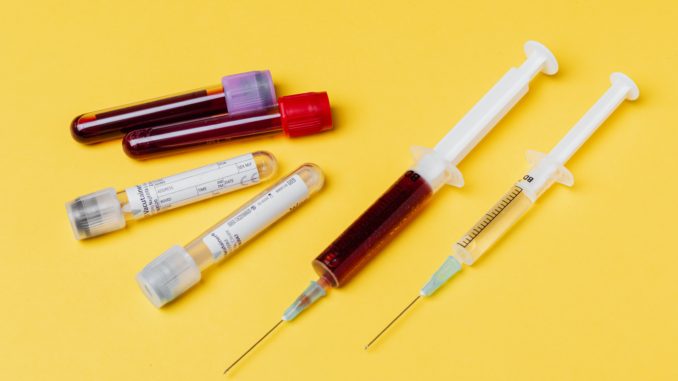
WHAT IS JAUNDICE?
Jaundice – It’s a word of Greek origin and is pronounced ‘yawn-diss’. It can be a symptom of many different disorders, but it’s most commonly associated with liver diseases.
Jaundice is a condition in which the skin and whites of the eyes take on a yellowish tinge. The skin may also itch or become sore, while urine may take on an ugly brownish color. Jaundice develops when too much bilirubin builds up in the body. Bilirubin is created when the body breaks down red blood cells and often appears in the urine.
CAUSES OF JAUNDICE
Jaundice commonly occurs due to a liver disorder, and can also be a symptom of gallbladder or kidney disease. It may also affect people with hepatitis B or hepatitis C or those with HIV/AIDS. Jaundice can also result from blood disorders, severe infections, liver damage due to toxins or drugs, and exposure to radiation. Jaundice may also occur due to pregnancy, as a result of an eating disorder (anorexia), or following extreme emaciation.

SYMPTOMS OF JAUNDICE
The symptoms of jaundice vary in their severity and can be numerous. Discomfort is usually the first sign to appear, following which mild jaundice – meaning the yellow color is modest – may develop within the first 24 hours. At this point, the symptoms – itching and soreness – typically become pronounced. The skin often becomes dry and rough in the areas most affected by jaundice. The whites of one’s eyes may also take on an unappealing hue.
The more advanced jaundice may develop later on at a slower pace, with the skin becoming more tender, the whites of one’s eyes developing a dark color, and experiencing discomfort when exposed to heat or sunlight. The most serious jaundice may occur when the skin becomes totally yellow and bluish, with the whites of the eyes taking on a brown color.
Jaundice can produce severe discomfort if one’s skin is covered by clothing or bedding at this time; causing itching, irritation, and pain. There may also be rashes of various colors which itch and have a tendency to bleed in some cases. With severe jaundice, yellow puss or fluid may emerge from the skin during or after urination.
Some tell-tale signs of jaundice that occur when the disease progresses are nausea, vomiting, and abdominal pain. In rare cases, jaundice may cause one’s urine to assume a red or brown hue, or one’s stools to be black and tarry.
There are times when one’s skin and the whites of their eyes may appear yellowish, but this doesn’t necessarily mean that jaundice is present. Flushing, sunburn, alcohol consumption, and fever are some conditions that may cause jaundice-like symptoms. This is why it’s important to consult a doctor if you suspect you have the condition.
GENERALIZED JAUNDICE
If the liver enlarges and it fails to filter toxins from the blood correctly, it can lead to generalized jaundice. When the liver fails to perform its function, bilirubin can leak into other organs and tissues which damages them. If your liver is damaged, the end-organ damage may be mild or might affect other parts of your body.
Damage to the brain can result in coma, muscular damage, and mental confusion. It can damage a major nerve usually resulting in pain in one’s arms or legs because the nerves involved are one’s peripheral nerves. Damage to the eye can lead to vision loss.
SIGNS AND SYMPTOMS OF LIVER PROBLEMS
Physical signs of liver problems include:
In some cases, a child may be born with jaundice; this is called neonatal jaundice, and it’s a condition known as cholestasis. When a baby is born with jaundice, the collection of bilirubin in the fetus’ blood causes it to develop in a similar way as adult jaundice.
Babies with neonatal jaundice may have a yellowish color on their skin, eyes, and mouth. They may also cry inconsolably and appear extremely sleepy. One’s stool may become dark and there may be problems with the bowels.
STEPS TO TAKE WHEN FACED WITH JAUNDICE:
If you experience any of the symptoms of jaundice, it’s important to visit your doctor as soon as possible. Your doctor will need to conduct tests in order to discover the underlying cause of your condition. They may ask you to describe your symptoms and how your body feels. These tests may include an evaluation of the urine and blood samples or a physical examination. There are also many other tests that can be conducted depending on the nature of your jaundice.
If you have liver problems, you may develop jaundice due to these conditions:
THE TREATMENT OF JAUNDICE IS DEPENDENT ON THE REASON THAT IT’S BEING EXPERIENCED BY THE PATIENT. THE FOLLOWING CONDITION:
- Stress jaundice.
- Pre-eclampsia.
- Postpartum jaundice (within the first few days after childbirth).
- Porcine jaundice syndrome – in pigs when the pancreas is enlarged, which hinders the digestion of fats and proteins in food.
- Jaundice due to iron deficiency.
- Ingestion of strong medications.
- Post-angioplasty jaundice
- Infection by bacteria or viral infections
- Alcoholic jaundice in the liver
In some cases, jaundice may manifest as an extremely dark skin color, which is referred to as melena (black vomit). When this occurs, other symptoms may also be present, such as abdominal pain and fever. If you suspect that you have melena, it’s important to consult a doctor as soon as possible.
These represent some of the general steps taken by doctors when faced with patients suffering from jaundice. The treatments will depend on the underlying cause. For example, if there has been an injury to the liver or gallbladder, then it will be necessary to treat those conditions first in order for jaundice to go away. In many cases, jaundice doesn’t require any kind of treatment, and will resolve on its own. However, if the jaundice is chronic, then it may be necessary to treat the condition with medication or surgical techniques.
Folic acid and vitamin B 12 deficiency is often seen in Jaundice. The disease requires immediate medical attention as it can lead to a severe form of anemia known as megaloblastic anemia.
TREATMENT:
However, in most cases, the treatment for hepatic jaundice is a liver transplant.
BLOOD TEST FOR DIAGNOSIS:
There are tests that are done to find out if there is damage to the liver. These tests include; selenium (Selenium) status, total bilirubin, alkaline phosphatase tests, Random blood sugar, and liver function test.
LIVER TRANSPLANT:
In cases, where the liver is severely damaged a liver transplant may be an option. In most cases, the patients are required to take medications for the rest of their lives. The transplanted liver has a very high rate of recurrence from hepatocellular carcinoma, less than 3% of patients will live out 5 years without recurrence.
The malignant cancers usually occur in 5–10 years after transplantation and are almost always preceded by the viral hepatitis C virus (HCV).
In cases, where the liver is damaged and needs to be transplanted, the patient will have to take medications for life. The patient will also have to do follow-up visits with the doctors or surgeon. The survival rate is not very high.
There are many causes of jaundice in pregnancy that spread through the placenta. Jaundice is known as cholestasis, the condition which occurs in the newborn during the first few days of life. The main cause of jaundice in the mother is cholestasis caused by pregnancy.
Nephritis caused by cholestasis is a term used to describe women who are pregnant and have a high level of bilirubin in the blood. In this case, the condition goes through the placenta and is absorbed by the fetus.

SYMPTOMS INCLUDE AN INTENSE JAUNDICE AND HIGH BILIRUBIN LEVELS.
In cases of neonatal jaundice, it occurs in the first few days of life, as a result of an inaccurate and rapid change in the level of bilirubin. This results in the baby being yellow and unhappy. Babies must be treated immediately with phototherapy to stop their symptoms.
PHOTOTHERAPY:
In some cases, phototherapy may be required. This will help to break down the bilirubin in the blood and allow the body to clear it out of the system quickly. The baby will be placed under light lamps which emit rays that can break down the bilirubin and transform it into compounds that are easily eliminated by the body so that they do not cause further damage. As this process is only temporary and does not stop the bilirubin from building up in the blood, it is an early option for treatment.
DIET:
It is often recommended that babies with jaundice feed on breast milk or formula which has been diluted with water, or that they are fed cow’s milk or rice milk. Milk that has been diluted with water provides a balance between proteins, minerals, and other nutrients.
In most cases, jaundice usually resolves on its own, and does not require any kind of treatment. If a patient is experiencing jaundice, it is recommended that they follow their doctor’s orders if they have been given any. This will allow the doctor to monitor the progress of jaundice and provide treatment if necessary.
CONCLUSION
In most cases, jaundice is considered to be a harmless condition that will resolve on its own. However, it is important to visit a doctor if you suspect that you might be suffering from jaundice. They will be able to diagnose the condition and provide treatment if necessary. In cases where jaundice persists or causes severe symptoms, a liver transplant may be recommended.


Leave a Reply